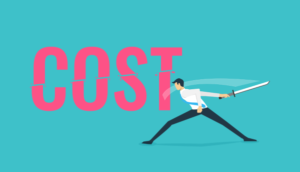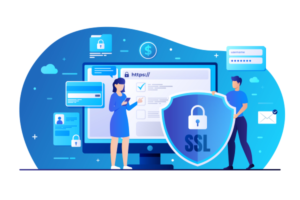In January of this year, The World Bank declared, “The global economy is perilously close to falling into a global recession…”
The world can’t seem to catch a break. Already weakened by the pandemic-induced recession of 2020, this year is showing no improvement. Massive layoffs, sky-high food prices, record-level bank runs, a soon-to-fail housing market, wars, and a changing political landscape all contribute to the present-day global situation.

Some might ask, “How similar are today’s events to those of 2008?” The answer is – similar, but with two stark fundamental differences:
- Back then, the tech world (aka startup culture) predominantly focused on hospitality and travel apps. This market was only starting to pick up steam and wasn’t the goliath we know it to be today. In fact, as of this year, the tech industry is estimated to be worth close to $5.2 trillion.
- It was more challenging to secure funding in 2008; today, alternative financing methods, as well as more funding accessibility options, are available to founders that can help them stay clear of trouble and ride out the storms.
Let’s say this: The 2008 recession is not a good indicator of our current downturn. As such, it should not be used as a roadmap to navigate today’s recession.
But not everything is doom and gloom. Although it may be true that operating a business today, especially within the SaaS industry, is challenging – there are plenty of opportunities ahead.
On the one hand, SaaS companies have the potential to grow as more fields are digitized and are less reliant on workers. On the other hand, there is the threat of contraction, given diminished spending and tighter budgets among users and companies, making it harder to secure funding and resulting in decreased valuations.
Regardless of how you view today’s situation, every SaaS company owner should think, “What can I do to prepare for this recession to come?” Treat this article as your starting point in answering that critical question.

SaaS Strategies To Fare In a Downturn
It can be safe to say that the SaaS market has experienced a 10+ year bull run – and is now facing its first business cycle decline. However, SaaS companies are resilient, and implementing the strategies below can help make them recession-proof.
Downsize Product Offerings, Upsize Its Efficiency
In previous low-interest-rate environments, companies could afford to stretch beyond their core portfolio due to inexpensive capital – VC money was plentiful.
This easy-to-access capital led to company growth taking precedence over margins, which was a reasonable tactic given the large market and steady stream of new customers. It led companies to create customized solutions to meet their customers’ needs.
However, the downside of this growth strategy is now evident: high development costs, pricing inefficiencies, and significant customer support overhead. Additionally, the mix-match of features has resulted in confusing product line-ups and inconsistent customer data, limiting the ability to extract valuable customer insights and hindering focus and priorities.
In today’s economic climate, SaaS companies must adapt their product roadmap to ensure market suitability and deliver optimal value to their customers. By concentrating on their core offerings and refining product features that address the most pressing customer needs, businesses can maintain efficiency while still providing a compelling value proposition.
This approach enables SaaS companies to streamline their operations, reduce overhead costs, and create a more connected and insightful customer experience, ultimately setting the stage for success.
Optimize The Acquisition Approach (Focus on Pricing)
Optimizing customer acquisition strategies while remaining mindful of costs is crucial in a challenging economic environment. One area to focus on is pricing.
Ensure your pricing model aligns with your target audience’s expectations and willingness to pay. Consider offering flexible pricing options or tiered plans that cater to different customer segments, allowing them to choose a package that best fits their needs and budget constraints.
Periodically re-evaluating your pricing strategy can help you stay competitive and attract more customers without sacrificing profitability.
Focus on Retention (Reduce Customer Churn)

Customer retention is essential for SaaS companies, as acquiring new customers can be more expensive than retaining existing ones.
In an economic downturn, prioritizing customer satisfaction and maintaining solid relationships is even more critical. Implement strategies that minimize churn, such as providing excellent customer support, regularly requesting feedback, allowing customers to temporarily pause their subscription, and proactively addressing any issues that arise.
Make sure you properly train your customer success teams to help clients fully utilize your product and reap the benefits – a loyal customer base can become a significant asset during tough times.
Practice Smart Innovation
While focusing on core offerings is essential, smart innovation can set your SaaS company apart from the competition. Identify gaps in the market and invest in new features or solutions that provide tangible value to your customers. Balancing innovation budgets with a need to cut costs requires some ingenuity from your side, as your efforts and funds should go to those projects which are more likely to: 1) increase the CLTV of the existing user base and/or 2) attract a new audience profile to your SaaS offering.
Focus on innovation that drives efficiency, improves user experience, or solves pressing problems your customers face. Remember that innovation doesn’t always have to be groundbreaking or extremely expensive – small improvements, made over a period of time, can also make a difference in customer satisfaction and overall business performance.
Identify and Address Inefficient Processes (Cut Costs)

Review your company’s processes and identify areas of inefficiency. Streamline operations and reduce overhead costs by automating repetitive tasks, eliminating redundancies, and consolidating resources. Leverage analytics to gain insights into your company’s performance and pinpoint areas that need improvement.
By cutting costs strategically, you can maintain a lean operation and allocate resources toward growth initiatives – ultimately making your business recession-proof.
Navigating the challenges of SaaS in an economic downturn requires adaptability, resilience, and strategic thinking. By focusing on product efficiency, optimizing acquisition approaches, retaining customers, innovating intelligently, and addressing inefficiencies, SaaS companies can survive and thrive in today’s challenging economic landscape.
Remember, every downturn presents an opportunity for those prepared to seize it.
Bonus: Learn more about strategies to upgrade your SaaS user base to paying or higher tier by downloading this FREE eBook.
SaaS Categories Forecast To Boom Even In Recession
As the SaaS market continues to expand, it’s helpful to explore several categories that are experiencing rapid growth, even in less fortunate times Let’s delve into each one and discuss why their adoption numbers are rising.
1. Vertical SaaS – Serving the Needs of a Single Industry

Vertical SaaS solutions cater specifically to the unique requirements of a particular industry, offering tailored functionality and features. This targeted approach allows companies within an industry to optimize their operations and reduce inefficiencies.
The demand for vertical SaaS solutions has grown as businesses recognize the need for specialized tools to serve their specific needs better, enhance productivity, and gain a competitive edge. The secret of vertical SaaS’ growth resides in these companies’ flexibility. By catering only to the needs of one industry, vertical SaaS are more nimble in adapting to market new needs, they can consolidate their acquisition costs easier, and even upsell customers more effortlessly.
Examples: ClearCare, Quizlet, BioIQ
2. SaaS for Remote Work – Conferencing, Chat Apps, Productivity, Co-Work, Collaboration
With the rise of remote work, SaaS tools that support communication, collaboration, and productivity have become essential for businesses, and they’re not going away any time soon. These tools include video conferencing platforms, chat apps and collaboration tools.
The increased adoption of remote work has driven the demand for SaaS tools that facilitate efficient communication and collaboration, helping teams stay connected and productive regardless of their physical location. Even in today’s world, where many employees have returned to the office or are doing a hybrid work approach (both at home and in the office), SaaS companies in the field are a need-to-have for businesses who want to be flexible with their workforce’s needs.
Examples: Zoom, Slack, Notion
3. AI SaaS Tools – Content, Imagery, Personalization

Artificial intelligence (AI) has revolutionized how businesses operate, and its integration into SaaS tools has increased efficiency and automation in various sectors. More and more companies are looking to integrate AI solutions in their product capabilities – the boom we are seeing now comes on the tails of critical developments AI tools have seen starting last year. AI-powered SaaS tools can help businesses with content creation, image recognition, personalization, and more.
These tools leverage AI algorithms to automate tasks, analyze data, and make intelligent predictions, ultimately saving time and resources while improving the overall customer experience.
Examples: Grammarly, Twilio, Replit
4. Micro SaaS
Micro SaaS refers to small, niche tools that enhance the functionality of existing SaaS products, such as add-ons or extensions. These products often target a specific pain point or need within the market, making them attractive to users who require specialized functionality.
The growing popularity of micro SaaS is due to its ability to address unique needs and help businesses differentiate themselves from competitors. An additional advantage of this category of companies is that they are not so dependent on investment funding, like larger SaaS companies are, so they can go-to-market faster, even in partnership with established SaaS businesses.
Examples: HotSchedules, ClearCare, Upvoty
5. Low/No-Code Solutions
Low-code and no-code platforms enable users to create applications with minimal programming knowledge, making app development more accessible to non-technical users. This has led to increased adoption of low/no-code solutions as businesses seek to streamline their operations and reduce their reliance on skilled developers.
With the rapid growth of the low-code market, more businesses are recognizing the benefits of these platforms in terms of productivity, cost savings, and faster innovation.
Examples: Webflow, Wix, Carrd
6. Cybersecurity & Data Privacy

As the digital landscape becomes increasingly interconnected, the importance of robust cybersecurity measures and data privacy cannot be overstated. SaaS tools focusing on cybersecurity and data privacy are critical for businesses looking to protect their sensitive information and safeguard against potential threats.
The growing awareness of data breaches and the need for proactive security measures has fueled the adoption of cybersecurity and data privacy tools within the SaaS space.
So, even amidst a global recession, the SaaS market continues to evolve and expand, offering businesses an array of tools and services to improve their operations and stay competitive.
Conclusion
Navigating the challenging economic landscape during a recession calls for a strong focus on customer acquisition and retention strategies and the need for smart innovation in the SaaS industry.
Ensuring your product offerings are optimized and tailored to address pressing customer needs is crucial for maintaining a competitive edge.
By concentrating on these key areas and adapting to the changing market conditions, SaaS companies can demonstrate their resilience and continue to thrive even during economic downturns.
The SaaS model‘s fundamental flexibility and adaptability make it well-suited to weather the challenges of a recession, empowering businesses to seize opportunities and emerge stronger than before.





